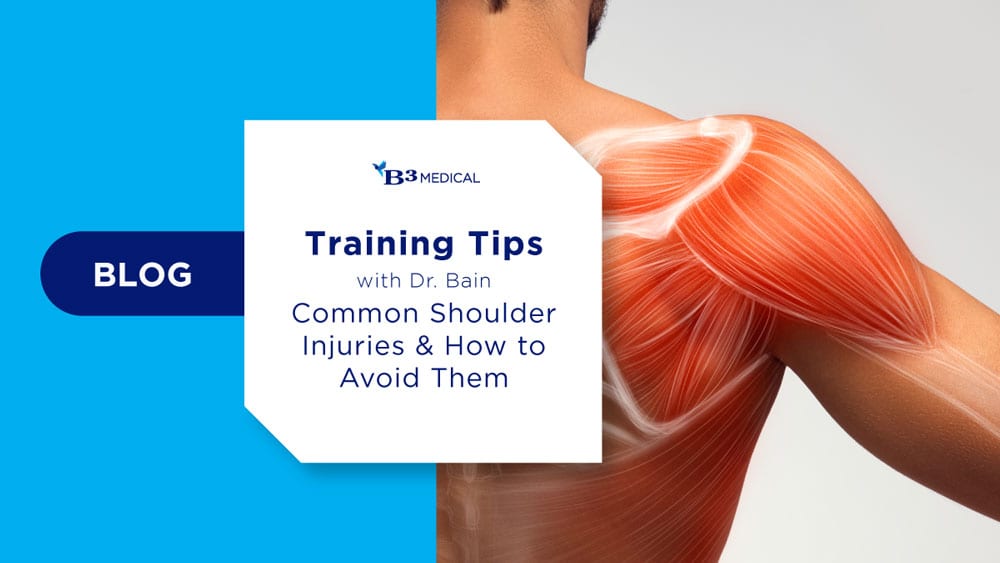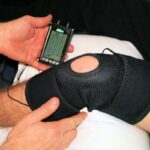Swimming is an excellent full-body exercise that provides a number of great benefits, and with limited impact, it is often recommended by doctors to improve health and fitness. Swimming laps is the most efficient way to increase your strength and endurance, but depending on the swimming style you choose, your technique may lead to some strain in the shoulder joint. What are some common shoulder injuries and how can you avoid them?
Anatomy of the Shoulder
The shoulder joint is one of the largest and the most mobile in the body and because of the “ball and socket” fit of the upper arm into the space at the front corner of the shoulder blade, we have great range of motion but at the cost of stability. The shoulder lets the arm move across all planes of the body, but to be that mobile, it’s only held in place by a web of ligament and muscle, and those tissues can be easily strained and result in a sports injury.
Common Swimming Injuries and How to Avoid Them
There are four common styles of swimming that utilize different types of movement in the torso, arms and legs. Some of the main causes of injury in swimming include poor stroke mechanics (alignment in movement), poor flexibility or range of motion, and decreased strength and stability. Common swimming sports injuries include:
- Neck and shoulder strain
- Inflammation in the joint
- Rotator Cuff Tendonitis or tears
- Tears in the cartilage of the shoulder joint
- Shoulder impingement syndrome, from positional shoulder blade pressure
How Can You Prevent Shoulder Injuries?
In many cases, shoulder injury prevention will come down to proper strength training, conditioning, and and warm ups that prepare the shoulder joint for the required movements. By each stroke, we’ve outlined some guidelines to help keep your joints happy and healthy:
Breaststroke
Work on trying to keep the back of the head in line with the spine, and this will prevent increased stress on the neck and the muscles between the shoulders. Also, focus on leg and hip strength during conditioning; a stronger kick provides more speed with less effort in the upper body.
Backstroke
New backstroke swimmers should focus on gradually increasing distance and intensity, because the neck muscles utilized need time to develop strength. Also, allow for accurate rotation in the upper body so the muscles in the upper back and sides of the ribs are used to stabilize the shoulder joint and decrease stress.
Freestyle
Balance is especially important for the front crawl, where the entire body needs to rotate to efficiently make space for taking a breath. Keep the head in line with the spine by drawing chin towards the throat to reduce strain on the muscles in the neck and shoulders when breathing, and make sure to breathe equally on both sides to avoid muscle imbalance that could pull on shoulder structures.
Butterfly
Proper timing is key when it comes to butterfly; if you lift the arms too early, you’ll be struggling against the resistance of the water. Lower body strength is also essential, as a powerful kick lifts the upper body into the right position for forward movement of the arms.
Suffering with a Shoulder or Sports Injury?
At B3 Medical, we understand that a shoulder injury can be something that impacts every part of your life, and improving your pain and stability are our priorities. We offer a wide variety of treatment modalities to make sure that you receive well-rounded, comprehensive care and the best possible outcomes. Please call or email today to learn more about how we can help you find relief!



























